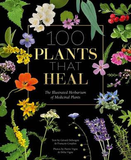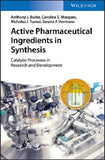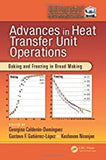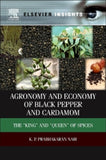Current Practice of Gas Chromatography-Mass Spectrometry Wilfried M.A. Niessen Special Indian Reprint
Current Practice of Gas Chromatography-Mass Spectrometry
Wilfried M.A. Niessen
SPECIAL INDIAN REPRINT !
April 4, 2001 by CRC Press , Reprinted in India 2016
Reference - 528 Pages
Summary
This volume details the principles and instrumentation of gas chromatography-mass spectrometry (CG-MS), and outlines industrial, environmental, pharmaceutical, clinical, toxicological, forensic and food-related applications, revealing findings from the laboratories of 40 contributing scientists around the world using GC-MS in practice. It describes upstream and downstream applications of GC-MS in the petroleum industry and identifies chlorinated compounds in the environment with quadrupole ion-trap technology and high-resolution sector instruments.
Table of Contents
Part 1 Principles and Instrumentation of GC-MS:
1. Principles and instrumentation of GC-MS;
2. Principles and applications of surface ionization in GC-MS.
Part 2 Industrial and environmental applications:
3. GC-MS in the petroleum industry;
4. Analysis of dioxins and PCBs by quadrupole ion-trap GC-MS;
5. GC-MS analysis of chlorinated organic compounds;
6. On line SPE-GC-MS for Water Analysis
7. GC-MS in occupational and environmental health risk assesment with some applications related to environmental and biological monitoring of 1-nitopyrene;
8. Application of SPME-GC-MS in quantitative bioanalysis.
Part 3 Pharmaceutical and Clinical Applications:
9, GC-MS of drugs in biological fluids after automated sample pre-treatment;
10. GC-MS analysis of anaesthetics and metabolites using multidimensional detection strategies;
11. GC-MS in clinical stable isotope studies - possibilities and limitations;
12. Clinical steroid analysis by GC-MS;
13. GC-MS for selective screening for inborn errors of metabolism.
Part 4 Toxicological and Forensic Applications:
14. Applications of GC-MS in clinical and forensic toxicology and doping control;
15. Detection of drugs of abuse by GC-MS;
16. GC-MS Analysis of explosives.
Part 5 Food-related Applications:
17. GC-MS analysis of flavours and fragrances;
18. GC-MS analysis for residue analysis - some basic concepts;
19. Applications of GC-MS in residue analysis of veterinary hormonal substances and endocrine disruptors;
20. Identification of terpenes by GC-MS


















